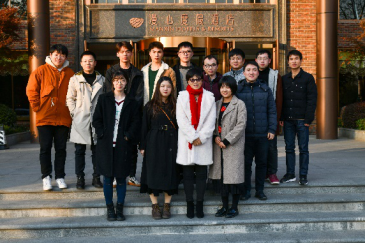From December 8 to 9, 2019, the symposium, hosted by the Complex Network Science and Intelligent Systems Laboratory (under preparation) at Fudan University and co-organized by the Shanghai Society for System Simulation, was held at the Green Island Manxin Resort Hotel in Shanghai. The event was supported by the National Natural Science Foundation project “Empirical Research on the Correlation Between Spatiotemporal Network Characteristics and Network Topology” (11875133) and the National Key Research and Development Program “Smart City Visualization and Cyber-Physical Analysis System Based on the Physical and Logical Framework of Ultra-Complex Network Systems” (2018YFB2101302).
The symposium brought together more than ten members from various project teams under the National Key R&D Program “Critical Technologies and Demonstration for IoT and Smart Cities”, focusing specifically on the project “Development and Application of Cyber-Physical Integration Key Technologies for Smart Cities.” Participants engaged in academic exchanges to share insights and developments.
The team behind the “Empirical Research on the Correlation Between Spatiotemporal Network Characteristics and Network Topology” project focused on studying spatial networks and embedding time-varying characteristics into the research. By exploring the topological properties of complex networks, the project aims to uncover correlations between structures and ultimately enhance the functionality of networks.

The project team for the “Development and Application of Cyber-Physical Integration Key Technologies for Smart Cities”, part of the National Key R&D Program “Critical Technologies and Demonstration for IoT and Smart Cities”, proposed piloting smart city applications in small-scale smart communities, such as Xuntang Town in Wuxi. This approach allows for focused theoretical research while facilitating the practical implementation of specific smart applications. The Smart City Visualization and Cyber-Physical Analysis System, a core component of the project, emphasizes the integration of visualization technologies with mixed reality (MR) technology to enhance system functionality.
The presentations and reports delivered during the symposium sparked enthusiastic discussions and received highly positive feedback from the attending scholars. Participants expressed that they gained valuable insights from the exchanges. The event concluded successfully in an atmosphere of lively academic interaction and collaboration.

